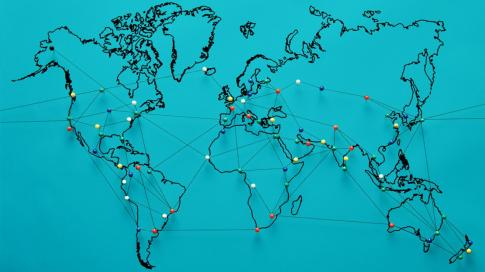Patents vs. the Pandemic

With the arrival of COVID-19, it is now ...
By Joseph E. Stiglitz & Arjun Jayadev & Achal Prabhala
As researchers around the world rush to develop new diagnostics and treatments for COVID-19, we must not forget that such cooperation is an exception to the rule. In the absence of public intervention, we will remain reliant for life-saving drugs and vaccines on a monopoly-driven system that favors profits over people.
NEW YORK – Imagine a world in which a global network of medical professionals monitored for emerging strains of a contagious virus, periodically updated an established formula for vaccinating against it, and then made that information available to companies and countries around the world. Moreover, imagine if this work were done without any intellectual-property (IP) considerations, and without pharmaceutical monopolies exploiting a desperate public to maximize their profits.
This may sound like a utopian fantasy, but it is actually a description of how the flu vaccine has been produced for the past 50 years. Through the World Health Organization’s Global Influenza Surveillance and Response System, experts from around the world convene twice a year to analyze and discuss the latest data on emerging flu strains, and to decide which strains should be included in each year’s vaccine. As a network of laboratories spanning 110 countries, funded almost entirely by governments (and partly by foundations), GISRS epitomizes what Amy Kapczynski of Yale Law School calls “open science.”
Because GISRS is focused solely on protecting human lives, rather than turning a profit, it is uniquely capable of gathering, interpreting, and distributing actionable knowledge for the development of vaccines. While this approach may have been taken for granted in the past, its advantages are quickly becoming clear.
In responding to the pandemic, the global scientific community has shown a remarkable willingness to share knowledge of potential treatments, coordinate clinical trials, develop new models transparently, and publish findings immediately. In this new climate of cooperation, it is easy to forget that commercial pharmaceutical companies have for decades been privatizing and locking up the knowledge commons by extending control over life-saving drugs through unwarranted, frivolous, or secondary patents, and by lobbying against the approval and production of generics.
With the arrival of COVID-19, it is now painfully obvious that such monopolization comes at the cost of human lives. Monopoly control over the technology used in testing for the virus has hampered the rapid rollout of more testing kits, just as 3M’s 441 patents mentioning “respirator” or “N95” have made it more difficult for new producers to manufacture medical-grade face masks at scale. Worse, multiple patents are in force in most of the world for three of the most promising treatments for COVID-19 – remdesivir, favipiravir, and lopinavir/ritonavir. Already, these patents are preventing competition and threatening both the affordability and the supply of new drugs.
We now have a choice between two futures. In the first scenario, we continue as usual, relying on the big pharmaceutical companies, hoping that some potential treatment for COVID-19 will make it through clinical trials, and that other technologies for detection, testing, and protection will emerge. In this future, patents will give monopoly suppliers control over most of these innovations. The suppliers will set the price high, forcing downstream rationing of care. In the absence of strong public intervention, lives will be lost, particularly in developing countries.
The same problem will also apply to any potential COVID-19 vaccine. Unlike Jonas Salk’s polio vaccine, which was made freely available immediately, most vaccines that come to market today are patented. For example, PCV13, the current multi-strain pneumonia vaccine administered to babies, costs hundreds of dollars because it is the monopoly property of Pfizer. And although Gavi, the Vaccine Alliance subsidizes some of the costs of the vaccine in developing countries, many people still cannot afford it. In India, more than 100,000 preventable infant deaths from pneumonia are recorded every year, while the vaccine brings in roughly $5 billion in revenue for Pfizer annually.
In the second possible future, we would acknowledge that the current system – in which private monopolies profit from knowledge that is largely produced by public institutions – is not fit for purpose. As public-health advocates and scholars have long argued, monopolies kill, by denying access to life-saving medicines that otherwise would have been available under an alternative system – like the one facilitating the yearly production of the flu vaccine.
There is already some movement in favor of alternative approaches. For example, Costa Rica’s government recently called on the WHO to establish a voluntary pool of IP rights for COVID-19 treatments, which would allow multiple manufacturers to supply new drugs and diagnostics at more affordable prices.
Patent pooling is not a new idea. Through the Medicines Patent Pool, the United Nations and the WHO have for years sought to increase access to treatments for HIV/AIDS, hepatitis C, and tuberculosis, and have now expanded that program to cover COVID-19. Patent pools, prize funds, and other similar ideas are part of a broader agenda to reform how life-saving drugs are developed and made available. The goal is to replace a monopoly-driven system with one based on cooperation and shared knowledge. /project-syndicate




 del.icio.us
del.icio.us Digg
Digg

Post your comment